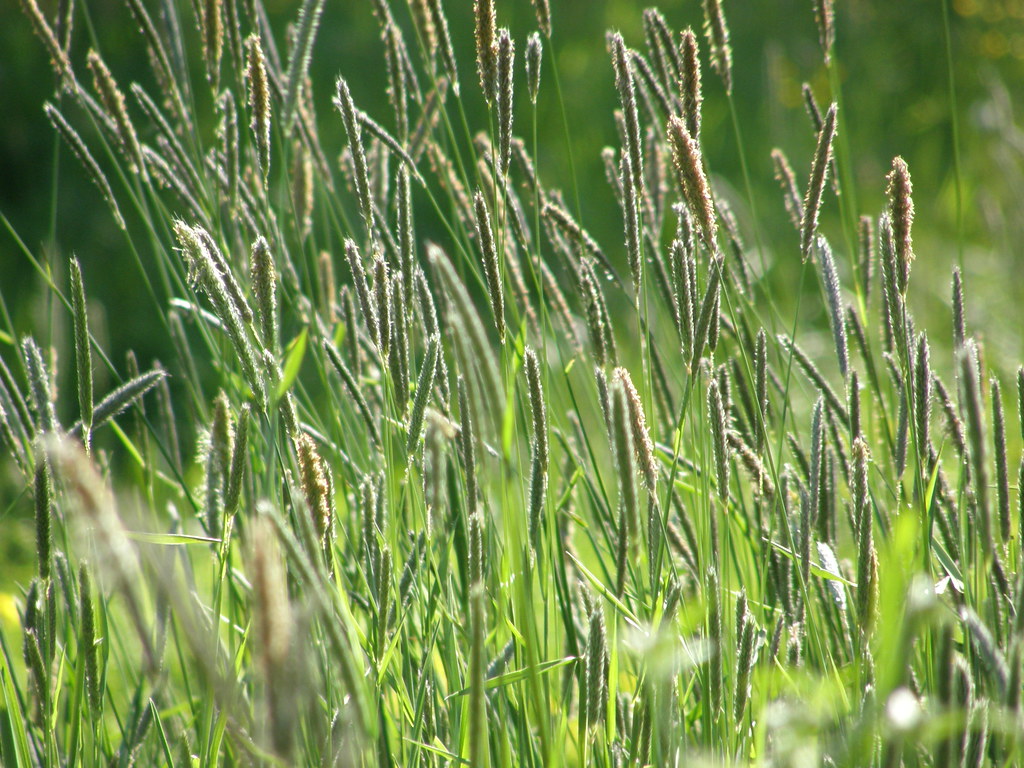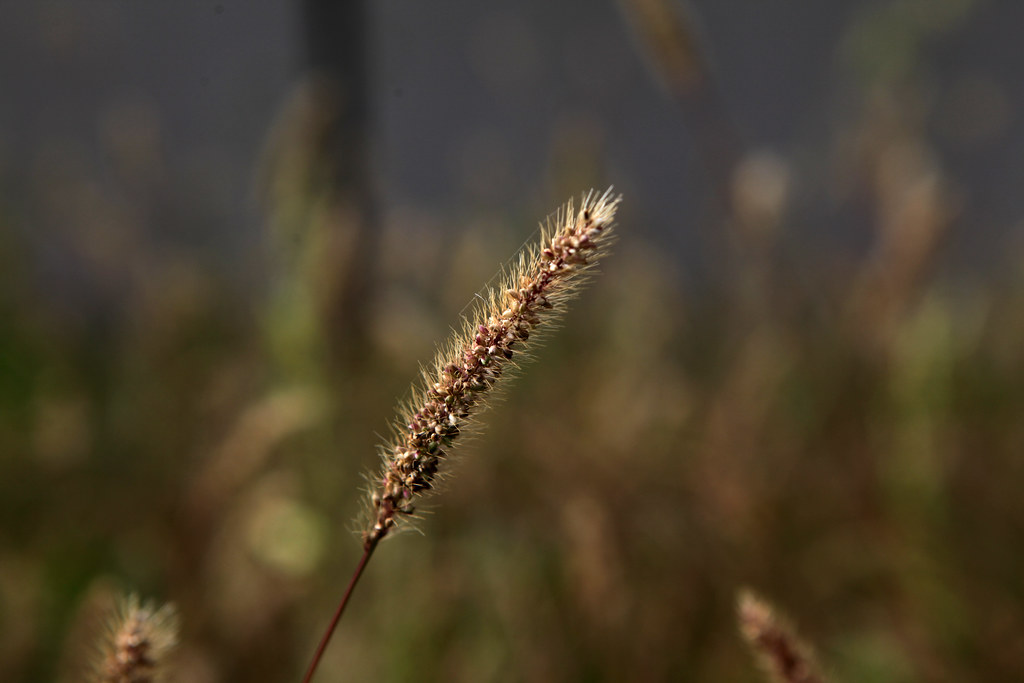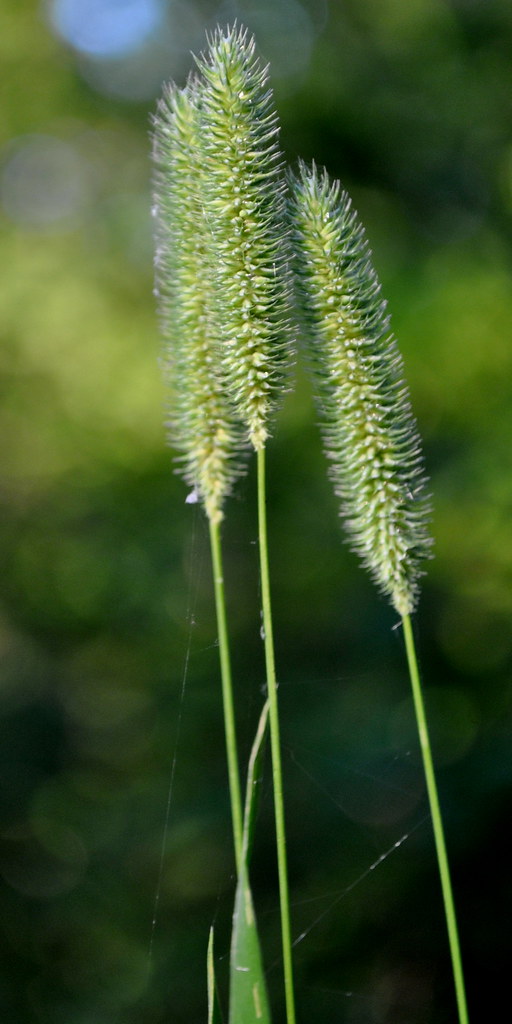Introduction to the species: Timothy Grass
Timothy grass, or Phleum pratense, is a tallgrass native to Eurasia. When growing in the wild, timothy grass prefers well-drained soils with total sun exposure. However, it will grow in other conditions as well because of its widespread adaptability.
- Group 1: grasses
- Class: monocots
- Order: poles
- Family: Poaceae
Timothy Grass Leaves
Timothy grass has slender leaves that are flat and green at the top with purple undersides; this helps absorb sunlight for photosynthesis. Its purple stems can be difficult to see until closer inspection because they blend into their surroundings. The stems have a covering of nodes containing buds for growth; these act like roots until conditions allow them to sprout shoots throughout the rest of the strand.

Timothy Grass Seeds
The seeds are off-white with a round shape and black cross of varying sizes on the surface depending on the variety as the wind blows pollen between plants allowing self-pollination. This process is called anemophilous pollination. Once fertilized by this method, seed pods will begin to form on the same stem. As they mature, these seed pods curl outward into three sections that resemble cheerios cereal, giving them their name: birdseed grasses or oat grasses (glumes). The outer seed coats turn straw-coloured during maturity while inner husks become brown. When ripe, they burst open and release all contained seeds at once.
Plantation of Timothy grass in almost any soil condition, but root growth will be most successful if the soil is of a loamy texture. This type of soil will not become compacted and has a good balance of nutrients for new roots to absorb while growing. The seeds will germinate quickly and begin to grow within ten days. The plant develops very few “secondary roots” during this period, inhibiting its ability to move water later during drought conditions. For sturdy growth, watering should occur regularly until maturity, or else the plant may die off from lack of water intake before reaching its full height potential.
Read More: Longevity Spinach its benefits and complete process of its growing
Timothy Grass Growth and effects on Environment
It can be cut multiple times per season if regrowth can reach 5-7 inches before re-cutting. Timothy can be cut as a hay crop or grazed by livestock. It also has the benefit of containing lignin which prevents horses from breaking teeth due to its high silica content, and it is easily digestible. “Timothy grass” is also the correct term for several cultivars of “Phleum pratense” used as lawns in temperate climates.
When thinking of a lawn, you might imagine a green field flooded with sunlight and covered in thin blades of grass. As the population grows and people become more conscious about their environment – we look for ways to cut back our energy usage. This grass leads to lower carbon emissions, which leads to cleaner air and water, which leads to healthier citizens.
When we don’t use as much energy (e.g., Electricity) for everyday appliances such as heating and lighting in our homes – we tend not to use furnace filters and other small machinery that requires Electricity.
Our lawns still require sunlight and airflow to ensure healthy growth, so we need to provide proper care when not using these services. To maintain a healthy green lawn in winter – cover it with snow or place some form of insulation over it (such as plywood sheets).
Timothy Grass for Feeding
Timothy grass is a perennial plant whose seeds feed animals like horses, cattle, pigs, and poultry. Grass harvests after matured and dehisced (opened) and then stored to be fed appropriately or processed into pellets or cubes. Typically it makes up about 30% of horses’ diet during the summer months. When it is green, alfalfa hay makes up the remainder, only 10-15% in winter with good quality hay such as coastal Bermuda.
Adaptation and distribution of Timothy Grass
As its name suggests, the Timothy plant spreads like wildfire and grows where other flora cannot. You can find it in such locations as vacant lots and grassy areas near heavily forested environments.
This particular variety of grass is widespread in snowy lands. Still, it exists on most continents worldwide, except Australia (where there are no grasslands at all) and Antarctica. Because it overgrows – often outcompeting native plants – some countries have banned growing this variety outside farmland for fear that it will destroy their natural landscapes. However, other countries embrace it as a source of revenue and a first-rate fuel.
Characteristics of Timothy Grass
Like other types of grass, this particular type has different varieties depending on soil composition, climate, and local food preferences. It grows best in tropical climates but can withstand mild winter temperatures thanks to its deep roots. Its seeds are spread mainly by the wind; birds eat some of them too, which means that dispersal occurs over long distances (in addition to any human handiwork).
This grass is vital for Snowy land ecology because it acts as an insulator against cold weather. You can use this grass for making sheets, mats, and insulation for buildings. It also makes an excellent kindling and fuel for fireplaces if woven tightly enough or combined with another material such as wool.

Timothy Grass Care
This grass struggles to grow in hot, dry climates or during droughts. To grow a firm stand, consistent moisture is essential. As wholesome food for animals, Timothy grass is frequently sown with legumes. In this situation, the enhanced ammonium, infiltration, drainage, and extra minerals of Timothy grass are advantages of tillage.
Additional nitrogen is not required when seeded with beans, although stands planted separately benefit from multiple-spaced food infusions. Apply for the initial time at planting, once more in the spring, and once more following harvest. Grab hay before more than 50% of the plant’s bloom. Avoid cutting off the base leaves since they will support the subsequent growth cycle. The plant is prepared for collection again thirty to forty days after the initial harvest.
Timothy Grass causes Allergy.
Timothy grass (Phleum pratense) is one of northern and central Europe’s most common grass species that produces pollen allergens.
The IgE reactivity to these allergens manifests in about 40% of allergic patients and 20% of the general population. It grows best in more relaxed, humid, temperate climates and pastures.
Pollen causes objects to gain a negative electric charge, attracting the dust particles that carry allergens. These particles can then cause specific reactions in people who are allergic to them, such as sneezing and itchy eyes. However, another substance in nature is also associated with allergies: timothy grass. The Allergy related to this type of grass comes from one particular component – coumarin.
Dr Mark Paré has studied plant-pollinator interactions for twenty years at Simon Fraser University in Burnaby, BC. His research interests are pollination biology, phenology-plant flowering patterns & climate change impacts. Also, his research examined horticultural crops & native plants, plant population biology, & biodiversity conservation.
Timothy Grass: A Crucial Player in Ecological Balance
Timothy grass (Phleum pratense) stands as a pivotal component within various ecosystems, offering multifaceted contributions to environmental sustainability. As a resilient tallgrass native to Eurasia, its adaptability to diverse soil conditions underscores its significance in ecological restoration and maintenance efforts. Its extensive root system aids in soil stabilization, mitigating erosion risks in vulnerable landscapes. Moreover, Timothy grass serves as a vital habitat and food source for numerous animal species, fostering biodiversity and ecological resilience. However, its proliferation can pose challenges in certain regions, necessitating careful management strategies to prevent ecosystem imbalance. Understanding the intricate role of Timothy grass in ecological dynamics is imperative for fostering harmonious coexistence between human activities and natural ecosystems.
FAQs
How many types of grasses cause allergy symptoms?
The three primary types of grass that can cause an allergic reaction are Bermuda grass, Kentucky bluegrass, and orchard grass.
What are the symptoms of Allergy caused by grass?
Symptoms include sneezing, nasal congestion, itchy eyes, runny nose, as well as asthma attacks, and other breathing difficulties for those who suffer from chronic respiratory issues such as allergies or asthma.
Which season causes allergies due to grass?
Grass pollen is one of the most common allergens and triggers of asthma, which affects roughly 300 million people worldwide.
The grass pollen season starts every year at the beginning of spring and lasts until summer’s end, peaking in June and July.
Grass pollen allergy is usually worse in warmer weather: “Pollen-allergic patients suffer significantly more symptoms when temperatures rise.”
What is an Allergen?
Allergic reactions are the body’s immune response to a particular trigger, in this case, an allergen. Allergens can cause a wide variety of reactions, affecting different parts of the body in different ways. For example, allergies to pollen affect breathing by causing hay fever with symptoms like sneezing and runny nose, while food allergies most often cause stomach problems.
